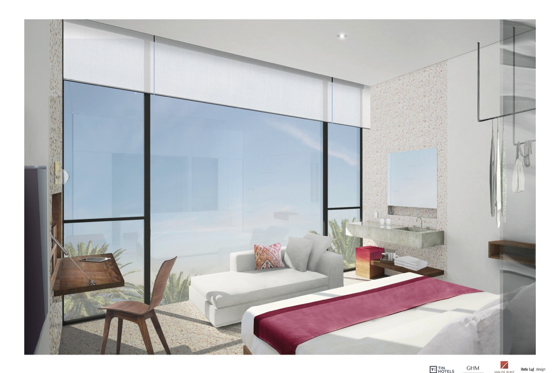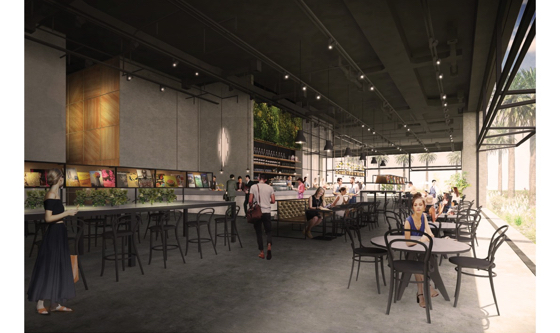Since its founding in 1992, GHM has catered to people who don’t want to be seen. They pay top dollars to stay in its hotels because they value the discreetness, privacy, serene environments, elegance and sophistication.
Now the management company based in Singapore is launching a mid-tier brand, Tin Hotels, for today’s dominant population comprising the large middle class and millennials. These are people who want to be seen, are social-conscious and for whom elegance is whether or not the technology works.
The first hotels are expected to open in Dubai and Oman in the next few years, with a target of 35 properties by 2022.
With its roots in catering to ‘anti-socials,’ coupled with little or no real points of differentiation in the crop of millennial brands that have entered the market, can GHM be the market leader it wants to be in this segment? HOTELS spoke to Hans Jenni, co-founder and president of GHM, looking for the answer.
HOTELS: Why the name Tin?
Hans Jenni: We had initially played with the conceptual idea to do a one-off artistic hotel built out of shipping containers or a modular building structure, hence ‘Tin.’
Starting with this initial idea, we realized there was a real opportunity in the market for a lifestyle hotel positioned in the mid-market segment. As we evolved the concept, we fell in love with the name ‘Tin Hotels.’ It is unusual and easy to pronounce in just about every language, whether Chinese, English or German.
H: What can we expect of a GHM mid-market brand? Will it be as serene and stylish as GHM, or completely different?
HJ: Tin Hotels will be very stylish and created as design icons, but not serene. Tin Hotels will be social spaces with interesting food outlets and a rooftop ‘Tin Bar’ that will be a perfect spot to relax by the pool by day and by night. This area will be a trendy lounge with music officiated by a disc jockey.

H: You aim to challenge the status quo in the mid-tier. What aspects can be done better?
HJ: We feel that few hotel products adequately cater to the changing demographics – in particular the so-called ‘millennials’ who are now driving the guest experience revolution – and the lifestyle and experiences our guests are seeking.
We believe that ‘lifestyle’ is more a state-of-mind than age specific, so our design approach takes into consideration that we are not just targeting young millennials but focusing on a slightly broader demographic. This, of course, has a strong influence on our design approach.
F&B will be an important part of the Tin Hotels experience. We simply won’t compromise on quality, nor creativity. The entire ground floor is envisioned to be a bustling café-centric space offering excellent coffees, cakes and casual food. This sets the scene for a 24/7 venue where one can have a quick meal, a coffee-meet or just be the in spot for the local community to gather.
Upon entering the hotel, the immediate impression a guest receives is that the space is a dramatic shift away from the traditional lobby: the openness of the design merges various elements that will make the Tin Hotel lobby a dynamic, social hub.
H: So many chains are trying to target to the new demographics. What are the challenges?
HJ: We actually don’t see any challenges. We view it more as a tremendous opportunity given how big and fast growing this customer segment and market is today. Looking ahead, it can only get bigger and with us having a very clear concept and vision, we believe that Tin Hotels, like GHM Hotels, will eventually operate at the very highest level within this segment.

H: How is the new model yield-driven and efficient for owners?
HJ: The Tin Hotels’ business model is one where we will employ high efficiency ratios in the way we approach hotel design and build. While Tin Hotels will naturally command rates that are lower than existing GHM hotels, we are confident Tin Hotels, by virtue of us bringing the same GHM DNA and attributes into the equation, will also get to enjoy rate premiums across this mid-tier segment.
But it has to be underscored that we are not aiming to dilute our brand pedigree by entering into the mid-tier segment. On the contrary, we want to import those same attributes (e.g. superlative design, exceptional guest experience) that have served us so successfully at the luxury segment these last 25 years and create another Style to Remember (GHM’s tagline) in a new segment.
H: But aren’t Tin and others like it becoming the new mainstream hotel brands? How then do you keep the existing GHM brand relevant moving forward?
HJ: Launching Tin Hotels will not take anything away from GHM Hotels. Whether it’s our own core brands – Chedi and Chedi Club or Ahn Luh – the same steadfastly-held corporate philosophy of making every hotel a Style to Remember continues to ring true. Yes, a Tin hotel may have smaller room sizes or have lower price entry points, but each will still wow with its design and lifestyle experiences. Just as we have done with GHM hotels, Tin Hotels will set new benchmarks across this mid-tier segment and redefine conventionally-held wisdom as to what one can expect from this tier of accommodation. In short, we intend to challenge the status quo.

H: What sort of rates will Tin command?
HJ: We’re not going in with one fixed mindset on what sort of rates Tin Hotels can or will command. Each location will present us with different opportunities, but as I mentioned earlier, regardless of what the competitive set looks like, we aim to command rate premium leadership across whichever markets we will eventually be operating in.
H: Why the partnership with van de Bunt Partners (VDB) and what will be the role of VDB while GHM manages?
HJ: Well, Peter (van de Bunt, managing director, VDB) and I have known each other for many years and I consider him a good friend. Peter’s extensive experience in real estate development and hotel investment provides the perfect complement to our own branding and operational expertise. The project and business development side of Tin Hotels will be spearheaded jointly by VDB and my own executive team, while we will of course manage the hotels when they eventually come online.
